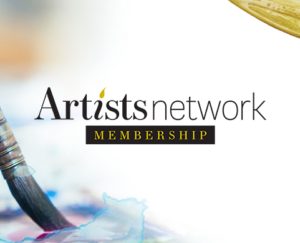Scratchboard Strokes: 12 Critical Effects

John N. Agnew, featured in The Artist’s Magazine (July/August 2012) has made a name for himself as a scratchboard artist. “I enjoy acrylic for painting because it lets me work quickly,” he says. “I enjoy scratchboard for its ability to produce very precise detail and an etching-like line quality.” He cautions that the work is both tedious and time-consuming, however, requiring patience and staying power. “Sticking with it is the hardest part,” he says. “I set small goals (measured in square inches) and constantly remind myself of how great it will look when I’m done, and how this tedium will pay off in the end.”
In this free excerpt from the article, Agnew shares 12 scratchboard strokes to get you started.
Scratchboard Strokes
By John N. Agnew

1. All of the effects in images 1, 2 and 3 were achieved by stippling—simply poking at the surface with the tip of a No. 11 X-Acto blade. (Some scratchboard artists prefer using a stylus or needle in a handle to using an X-Acto blade.) Varying the pressure of the blade, which changes the size of the dots and also the density of the dots, will produce light and dark tones. Leaving areas blank results in black.
2. Random patterns create uneven tones, which are useful for portraying rough textures or sand, but not smooth surfaces.
3. Regular patterns, such as short rows of dots placed evenly, will give you smoother tones. I do a few short rows of stipples in one direction, then change so that the rows are going in a different direction. This keeps the rows from forming distracting patterns. If you leave gaps or place rows unevenly, you’ll have to go back and carefully fill in the gaps to smooth out the tone.
4. You can vary the brightness and width of the lines or hatching by varying the pressure of your tool. Lines thinner than a hair are possible with a sharp instrument and very little pressure.
5. Using the sharp edge of an X-Acto blade perpendicular to the direction of a line results in a broad line. In this case you’re basically scraping, not engraving.
6. Cross-hatching to form even tones requires some practice. This works best when the lines are short and evenly spaced. Add more layers of cross-hatching to increase brightness (whiteness).
7. Rough textures and tones can be achieved with random cross-hatching and very tiny strokes.

8 & 9. Cross-hatching over stippling can give you very effective tones. Start with stippling over an area; then add highlights and shading by cross-hatching.
10, 11 & 12. You can employ line to create tone and texture: In Steady Hand, Studied Technique, I created the cypress bark texture by using line to suggest shape and texture. Use small strokes and run them in a direction that suggests the topography of the object.
Read the full article about Agnew’s scratchboard art techniques in The Artist’s Magazine (July/August 2012). And, don’t miss an issue when you subscribe!

Free artistsnetwork.tv preview
Click here to watch a preview of the video “The Complete Drawing Course for Beginners with Ronald Swanwick, Part 1.”
MORE RESOURCES FOR ARTISTS
• Watch art workshops on demand at ArtistsNetwork.TV
• Get unlimited access to over 100 art instruction ebooks
• Online seminars for fine artists
• Instantly download fine art magazines, books, videos & more
• Sign up for your Artist’s Network email newsletter & receive a FREE ebook
 Artists Network Membership - 1 Year
Artists Network Membership - 1 Year  Breakthrough Paint Along: Where Mixed Media Combine Together
Breakthrough Paint Along: Where Mixed Media Combine Together  Paint Along 127: Paint the Motion of the Sea
Paint Along 127: Paint the Motion of the Sea  Breakthrough Paint Along: The Big Value of Miniature Landscapes
Breakthrough Paint Along: The Big Value of Miniature Landscapes  Portrait Painting: Rembrandt's Techniques Video Download
Portrait Painting: Rembrandt's Techniques Video Download  Figure Drawing Tips with Brent Eviston Video Download
Figure Drawing Tips with Brent Eviston Video Download  Southwest Art August/September 2025 Digital Edition
Southwest Art August/September 2025 Digital Edition  Artists Magazine July/August 2025 Digital Edition
Artists Magazine July/August 2025 Digital Edition  Pastel Journal Summer 2025 Digital Edition
Pastel Journal Summer 2025 Digital Edition  Artists Magazine March/April 2025 Digital Edition
Artists Magazine March/April 2025 Digital Edition  Artists Magazine January/February 2025 Digital Edition
Artists Magazine January/February 2025 Digital Edition  Best of Watercolor: Winners of the Splash 26 Competition Print Edition
Best of Watercolor: Winners of the Splash 26 Competition Print Edition  Southwest Art June/July 2025 Print Edition
Southwest Art June/July 2025 Print Edition  Artists Magazine May/June 2025 Print Edition
Artists Magazine May/June 2025 Print Edition  Southwest Art 2021 Digital Collection × 1
Southwest Art 2021 Digital Collection × 1  Watercolor Artist 2020 Digital Collection × 1
Watercolor Artist 2020 Digital Collection × 1  Watercolor Artist 2019 Annual Digital Collection × 1
Watercolor Artist 2019 Annual Digital Collection × 1  Watercolor Mega Magazine Collection × 1
Watercolor Mega Magazine Collection × 1  Pastel for Beginners Workshop
Pastel for Beginners Workshop  Composition & Design for Landscape Painting Video Workbook
Composition & Design for Landscape Painting Video Workbook  Drawing Mastery: Shading Course
Drawing Mastery: Shading Course  Alla Prima Bootcamp: 4 Weeks to Confident Painting Course
Alla Prima Bootcamp: 4 Weeks to Confident Painting Course  Eight Greats: The Pastel Journal's 10th Anniversary Artist Interview Series Digital Download
Eight Greats: The Pastel Journal's 10th Anniversary Artist Interview Series Digital Download  Secrets of Hyperrealist Watercolor Course
Secrets of Hyperrealist Watercolor Course  Acrylic Artist Summer 2017 Digital Edition
Acrylic Artist Summer 2017 Digital Edition  Exploring Acrylic: Abstract Art in Action Video Download
Exploring Acrylic: Abstract Art in Action Video Download  WetCanvas Live! Paint Stunning Landscapes from Photos: Lesson 23 & 24 Video Download
WetCanvas Live! Paint Stunning Landscapes from Photos: Lesson 23 & 24 Video Download  WetCanvas Live! Paint Stunning Landscapes from Photos: Lesson 9 & 10 Video Download
WetCanvas Live! Paint Stunning Landscapes from Photos: Lesson 9 & 10 Video Download  The Whimsical Face with Jane Davenport Video Download
The Whimsical Face with Jane Davenport Video Download  Mixed-Media Faces Made Easy Video Download
Mixed-Media Faces Made Easy Video Download  What It Takes to Teach Video Download
What It Takes to Teach Video Download  On the hunt for found objects: How to Create New and Eclectic Molds Video Download
On the hunt for found objects: How to Create New and Eclectic Molds Video Download  Urban Sketching: Drawing People in Places Video Workbook
Urban Sketching: Drawing People in Places Video Workbook  Graffiti Grunge Art by Jodi Ohl Video Workbook
Graffiti Grunge Art by Jodi Ohl Video Workbook  Portraits: From Good to Great Video Download
Portraits: From Good to Great Video Download  Low-Tech Metal Apps: Wire, Foil, Mesh, & Screen Video Download
Low-Tech Metal Apps: Wire, Foil, Mesh, & Screen Video Download  Paint Along 126: Simplify Your Landscapes with a Limited Palette
Paint Along 126: Simplify Your Landscapes with a Limited Palette  Experimental Pastel Techniques with Dawn Emerson Video Download
Experimental Pastel Techniques with Dawn Emerson Video Download  Painting Patterned Trees Video Download
Painting Patterned Trees Video Download  Paint Along 125: Paint the Charming Towns of Italy
Paint Along 125: Paint the Charming Towns of Italy  Essentials of Painting Still Lifes
Essentials of Painting Still Lifes  7 Days to a Steady Journal Practice Video Download
7 Days to a Steady Journal Practice Video Download 




Have a technical question?
Contact UsJoin the Conversation!